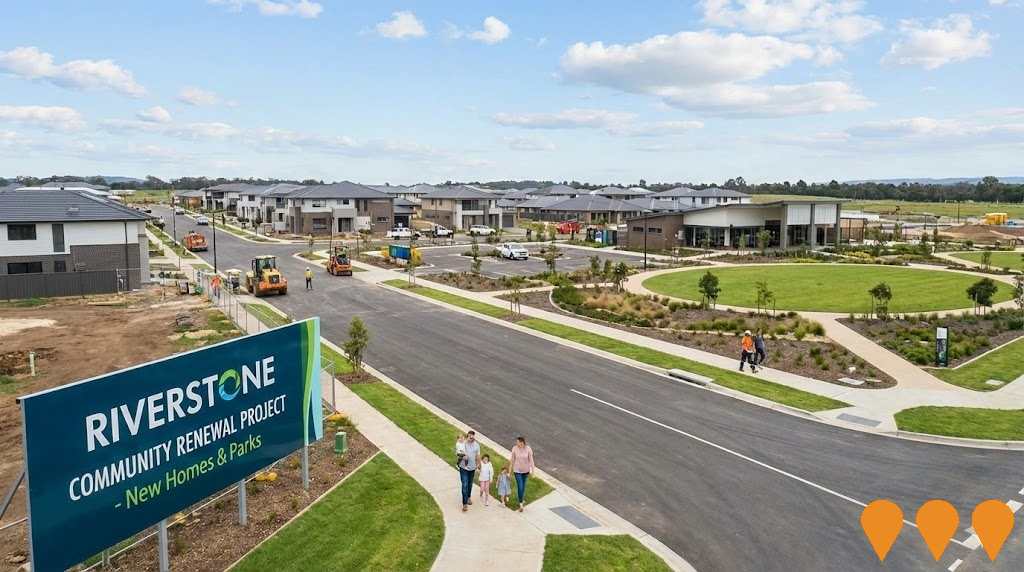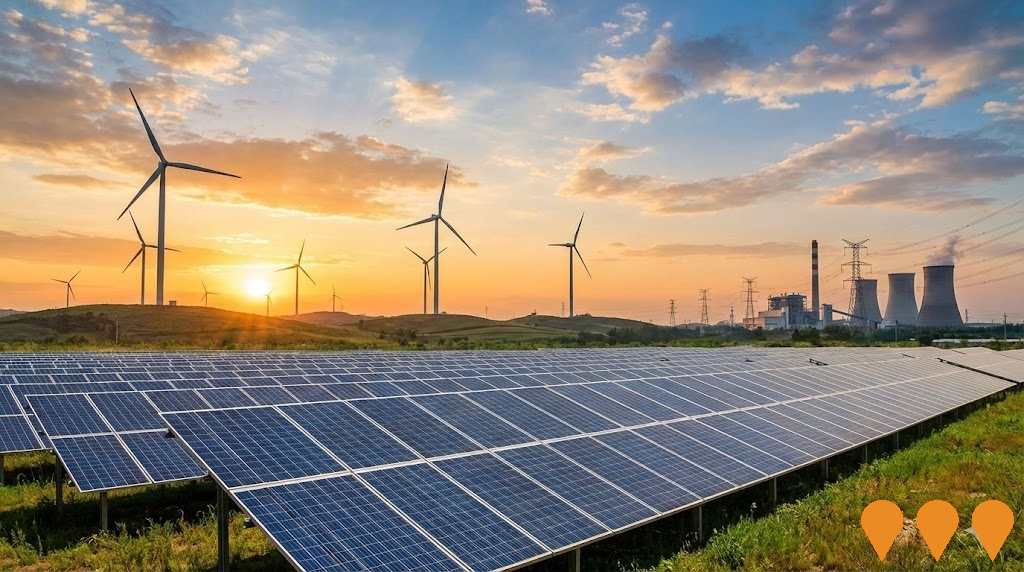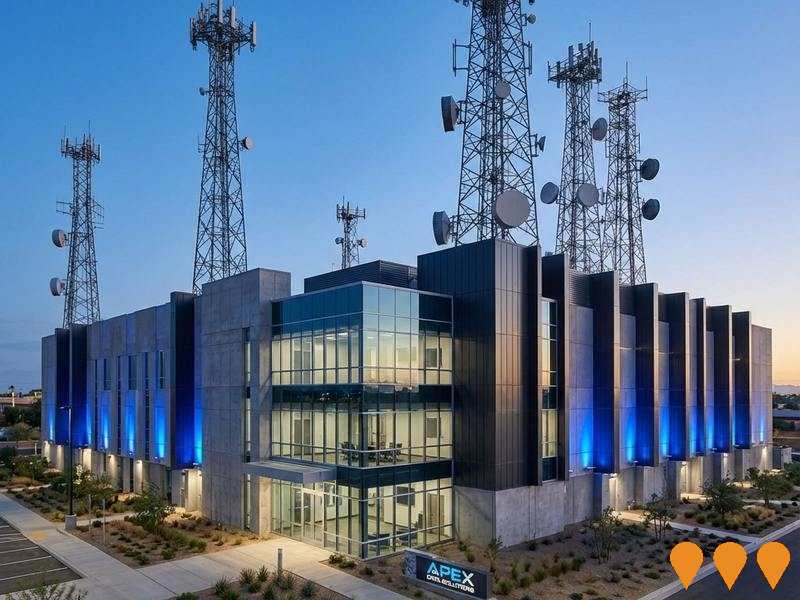Chart Color Schemes
est. as @ -- *
ABS ERP | -- people | --
2021 Census | -- people
Sales Activity
Curious about local property values? Filter the chart to assess the volume and appreciation (including resales) trends and regional comparisons, or scroll to the map below view this information at an individual property level.
Find a Recent Sale
Sales Detail
Population
An assessment of population growth drivers in Stawell reveals an overall ranking slightly below national averages considering recent, and medium term trends
Stawell's population was around 8,459 as of Aug 2025. This showed a decrease of 45 people since the 2021 Census which reported 8,504 people. The change was inferred from ABS estimated resident population of 8,398 in June 2024 and additional 63 validated new addresses since the Census date. This resulted in a density ratio of 3.1 persons per square kilometer. Stawell's decline of 0.5% since the 2021 census was better than the SA3 area's decline of -0.6%. Overseas migration primarily drove population growth during recent periods.
AreaSearch adopted ABS/Geoscience Australia projections released in 2024 with a base year of 2022 for each SA2 area. For areas not covered, AreaSearch used VIC State Government's Regional/LGA projections from 2023 adjusted via weighted aggregation to SA2 levels. Growth rates by age group were applied across all areas from 2032 to 2041. Based on projected demographic shifts, Stawell is expected to increase by 486 persons to 2041, reflecting a total increase of 5.7%.
Frequently Asked Questions - Population
Development
Residential development activity is lower than average in Stawell according to AreaSearch's national comparison of local real estate markets
Stawell averaged approximately 29 new dwelling approvals annually. Between fiscal years 2021 (FY-21) and 2025 (FY-25), a total of 147 homes were approved, with an additional 8 approved in FY-26. On average, over the past five financial years, 0.5 new residents arrived per new home.
This indicates that new supply is meeting or exceeding demand, providing ample buyer choice and creating capacity for population growth beyond current forecasts. The average construction value of new homes was $410,000, aligning with broader regional development trends. In FY-26, $31.7 million in commercial development approvals have been recorded, indicating strong commercial development momentum. Compared to the Rest of Vic., Stawell shows comparable building activity per person, supporting market stability inline with regional patterns.
This activity is below the national average, suggesting the area's established nature and potential planning limitations. Recent construction comprises 91.0% detached dwellings and 9.0% townhouses or apartments, maintaining the area's traditional low density character focused on family homes appealing to those seeking space. The estimated count of 381 people in the area per dwelling approval reflects its quiet, low activity development environment. Looking ahead, Stawell is expected to grow by 425 residents through to 2041. Based on current development patterns, new housing supply should readily meet demand, offering good conditions for buyers and potentially facilitating population growth beyond current projections.
Frequently Asked Questions - Development
Infrastructure
Stawell has moderate levels of nearby infrastructure activity, ranking in the 48thth percentile nationally
Three projects identified by AreaSearch may impact the area: Western Highway Upgrade from Ararat to Stawell, Great Western Future Plan 2014-2024, Melbourne To Adelaide Freight Rail Improvements, and SEC Renewable Energy Park - Horsham.
Professional plan users can use the search below to filter and access additional projects.
INFRASTRUCTURE SEARCH
 Denotes AI-based impression for illustrative purposes only, not to be taken as definitive under any circumstances. Please follow links and conduct other investigations from the project's source for actual imagery. Developers and project owners wishing us to use original imagery please Contact Us and we will do so.
Denotes AI-based impression for illustrative purposes only, not to be taken as definitive under any circumstances. Please follow links and conduct other investigations from the project's source for actual imagery. Developers and project owners wishing us to use original imagery please Contact Us and we will do so.
Frequently Asked Questions - Infrastructure
Victorian Renewable Energy Zones
VicGrid, a Victorian Government agency, is coordinating the planning and staged declaration of six proposed onshore Renewable Energy Zones (plus a Gippsland shoreline zone to support offshore wind). The 2025 Victorian Transmission Plan identifies the indicative REZ locations, access limits and the transmission works needed to connect new wind, solar and storage while minimising impacts on communities, Traditional Owners, agriculture and the environment. Each REZ will proceed through a statutory declaration and consultation process before competitive allocation of grid access to projects.
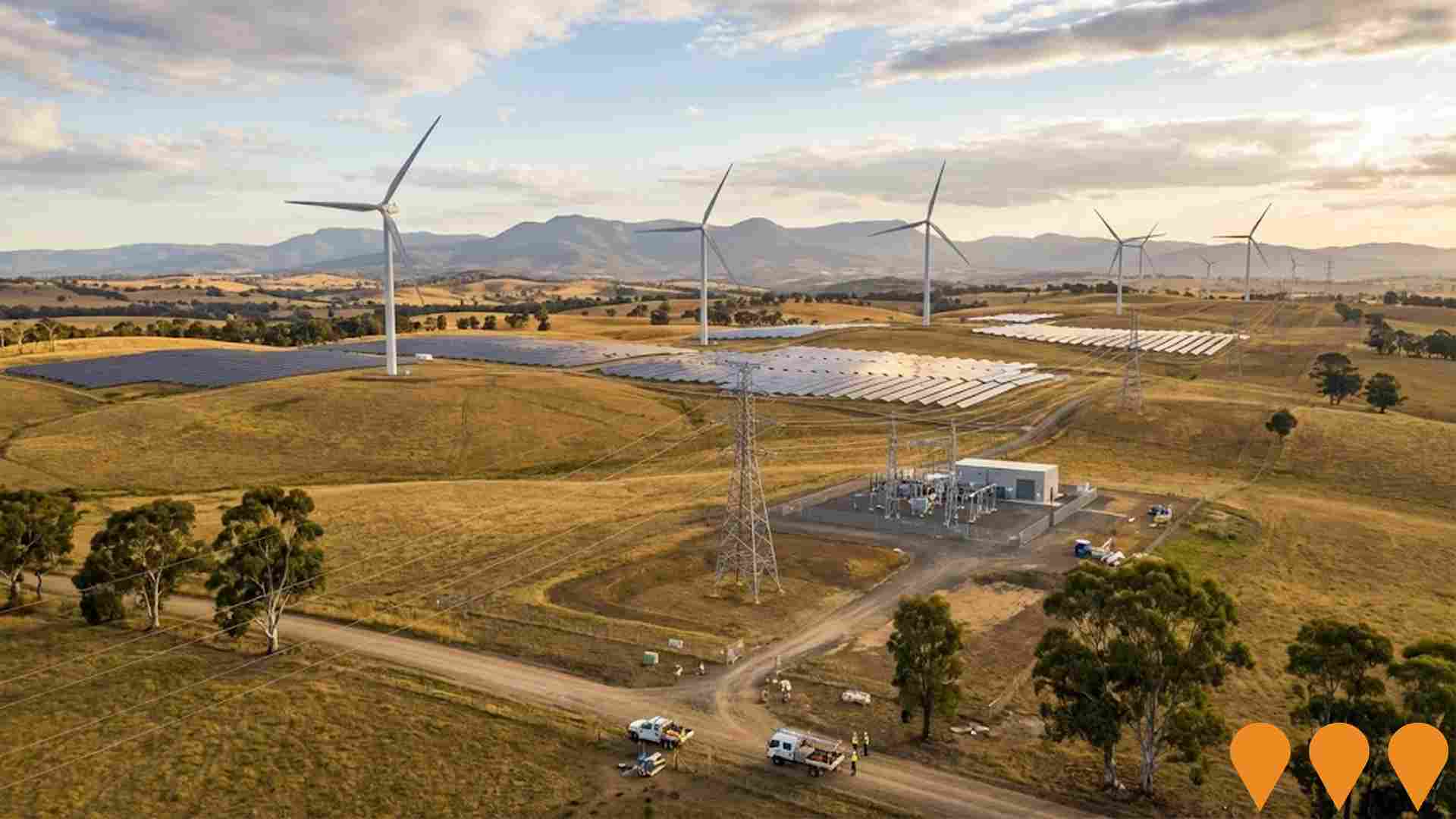
Horsham SmartWater & Integrated Water Management Project
Innovative recycled water infrastructure project that supports agricultural research and provides drought-proofing for green spaces in Horsham. The completed project delivers 126 megalitres of recycled water annually through a network of pipes connecting to parks, ovals, cemetery, and racecourse, reducing reliance on drinking water for irrigation. Includes Dissolved Air Flotation treatment facility and pipeline infrastructure.

Avonnefields Regional Development
An innovative and genuinely sustainable 50-hectare master planned residential and community development in Horsham, Victoria. Features over 300 dwellings, community hub, aged care precinct, distribution centre, active recreation facilities, flower production precinct, and renewable energy infrastructure including Australia's anticipated largest microgrid. The development includes solar energy generating 25% of electricity from renewable sources, community battery storage, EV charging station, and potential hydrogen production. Current timeline shows rezoning process from September 2024 to March 2025, with construction phases beginning in 2025-2026.

Western Renewables Link
Proposed 190km overhead 500kV double circuit high-voltage electricity transmission line from Bulgana in western Victoria to Sydenham in Melbourne's north-west. The project is currently in the EES public exhibition process (30 June to 25 August 2025).
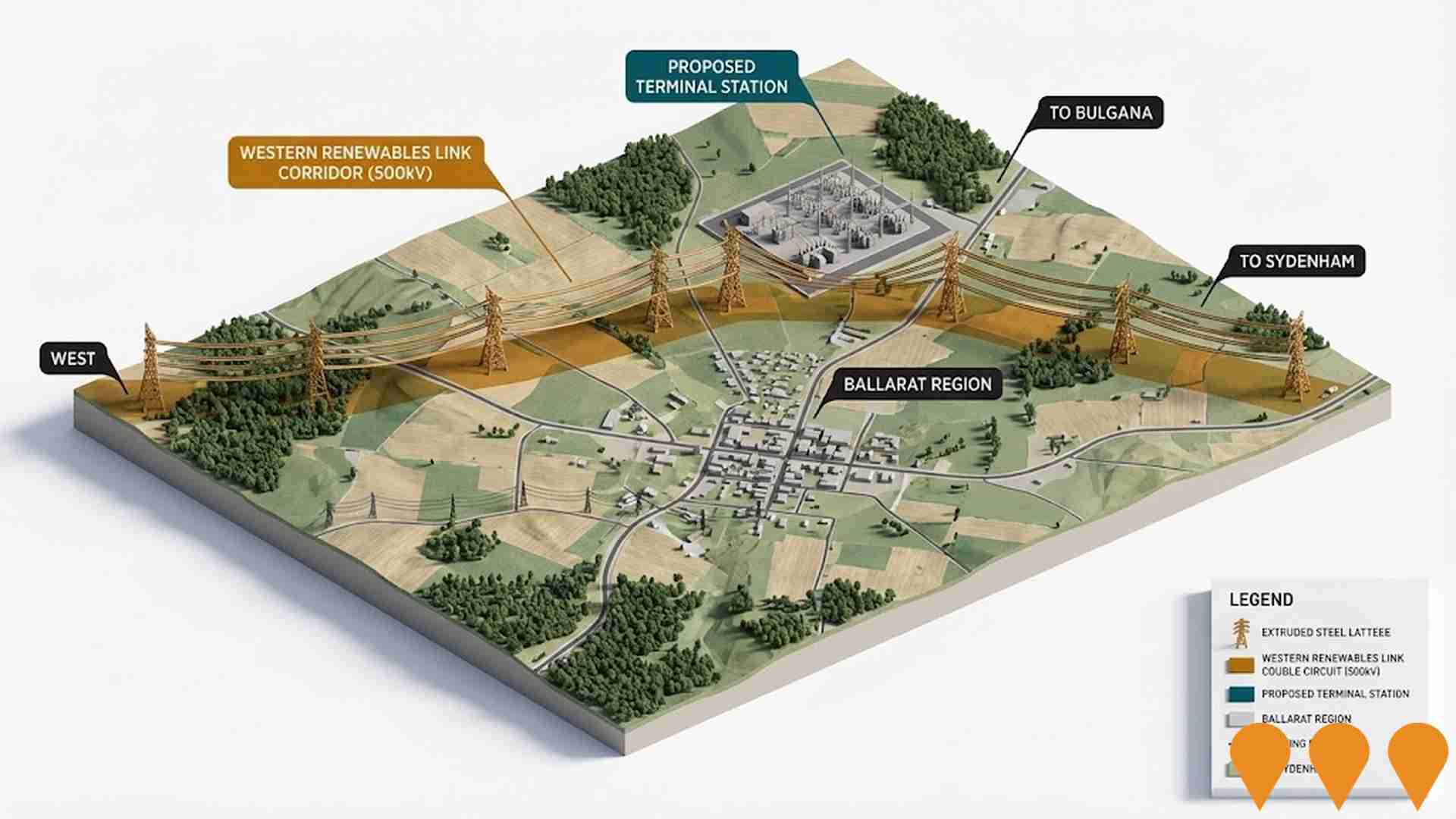
Western Highway Ballarat to Stawell Upgrade
Multi-billion dollar highway duplication project between Ballarat and Stawell, with 55km already completed between Ballarat and Buangor. The project includes adding two lanes in each direction with central median, upgrading intersections, and building new bridges. Benefits freight movement and regional connectivity including to Maryborough area.

Western Highway Upgrade - Ararat to Stawell
Planning is underway to duplicate the Western Highway between Ararat and Stawell, including adding two lanes in each direction with a central median, upgrading intersections, providing new access points that connect to local roads, and delivering a bypass to the north of Great Western. The scope also includes new bridge works and safer access along the corridor to improve regional safety and freight efficiency.

Ararat to Maryborough Line Upgrades (Murray Basin Rail Project)
Reopening and subsequent upgrades of the 88 km Maryborough-Ararat freight line (Avoca line) as part of the Murray Basin Rail Project. Works delivered standard gauge, 21-tonne axle loading, new 47 kg rail and ballast, a new passing loop at Elmhurst (mid-2024), and associated junction/signalling upgrades. The line is operational; further signalling works around Maryborough continue under the broader program.

Regional Housing Fund (Victoria)
A $1 billion Homes Victoria program delivering around 1,300 new social and affordable homes across at least 30 regional and rural LGAs, using a mix of new builds, purchases in new developments, renewals and refurbishments. Delivery commenced in late 2023 with early completions recorded; overall fund completion is targeted for 2028.
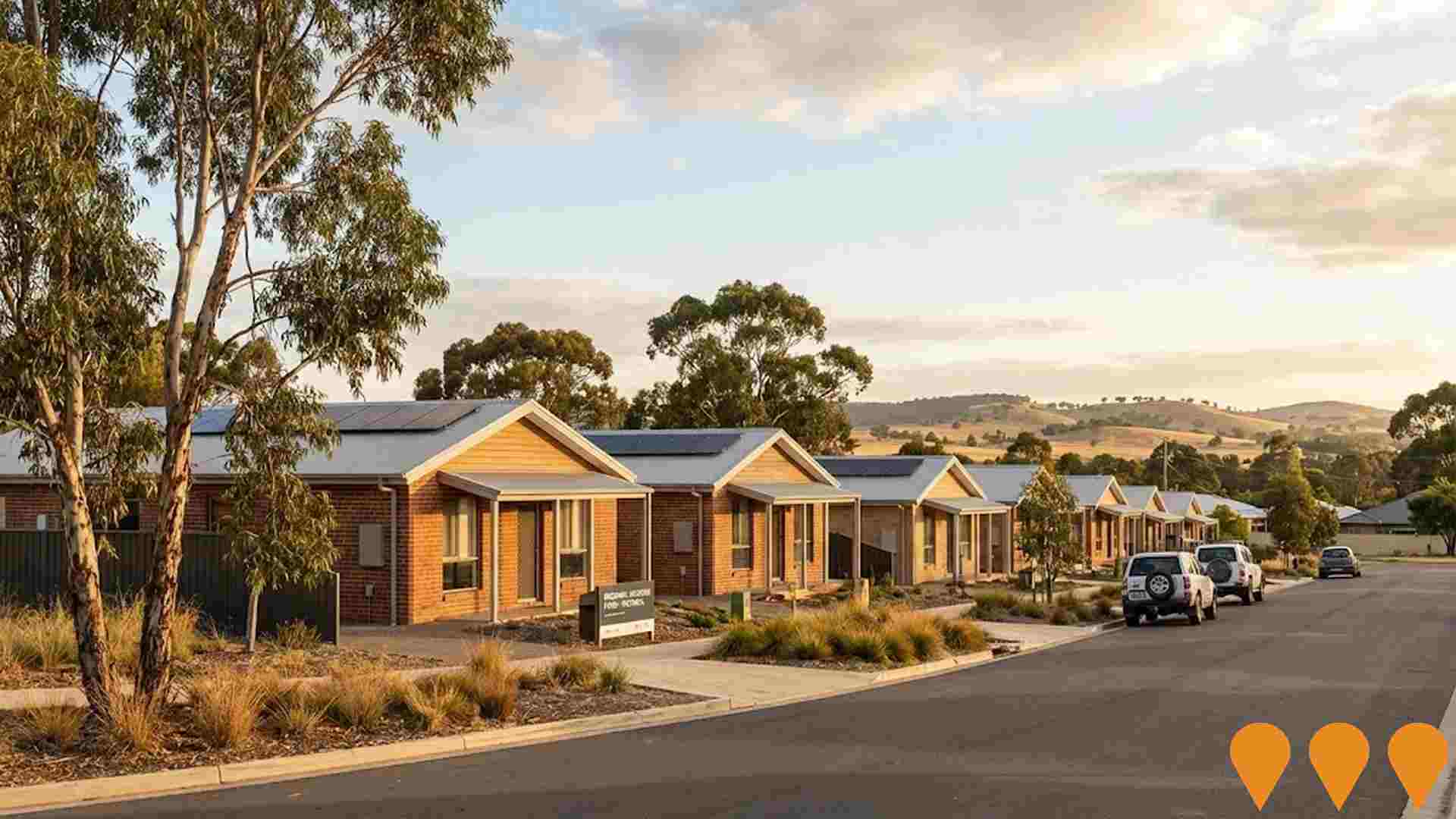
Employment
Despite maintaining a low unemployment rate of 3.1%, Stawell has experienced recent job losses, resulting in a below average employment performance ranking when compared nationally
Stawell has a diverse workforce with both white and blue collar jobs, prominent essential services sectors, and an unemployment rate of 3.1% as of June 2025. In this month, 4,142 residents were employed, which is 0.7% lower than the Rest of Vic.'s rate of 3.8%.
The workforce participation rate was 53.4%, slightly below the Rest of Vic.'s 57.4%. Key employment sectors in Stawell are health care & social assistance, manufacturing, and accommodation & food services. Manufacturing stands out with employment levels at 1.8 times the regional average. Conversely, construction is less represented, with only 6.6% of Stawell's workforce compared to Rest of Vic.'s 10.4%.
Some residents commute for work opportunities outside Stawell. Between June 2024 and June 2025, labour force levels decreased by 4.2%, while employment declined by 3.4%, resulting in a 0.8 percentage point drop in unemployment rate. In contrast, Rest of Vic. saw an employment decline of 0.9% and labour force decline of 0.4%, with a 0.4 percentage point rise in unemployment rate. Jobs and Skills Australia's national employment forecasts from May 2025 project overall growth of 6.6% over five years and 13.7% over ten years, but industry-specific projections vary significantly. Applying these projections to Stawell's employment mix suggests potential local growth of approximately 5.6% over five years and 12.7% over ten years.
Frequently Asked Questions - Employment
Income
The area's income levels rank in the lower 15% nationally based on AreaSearch comparative data
AreaSearch's latest postcode level ATO data for financial year 2022 shows Stawell's median income among taxpayers is $45,057, with an average of $53,917. This is below the national average. Rest of Vic.'s median is $48,741 and average is $60,693. Based on Wage Price Index growth of 12.16% since financial year 2022, current estimates for Stawell are approximately $50,536 (median) and $60,473 (average) as of September 2025. According to the 2021 Census, household, family and personal incomes in Stawell fall between the 12th and 24th percentiles nationally. The income distribution shows that 27.9% of the community earns $1,500 - 2,999 (2,360 individuals), similar to the surrounding region at 30.3%. Housing costs are modest with 90.1% of income retained, but total disposable income ranks at just the 19th percentile nationally.
Frequently Asked Questions - Income
Housing
Stawell is characterized by a predominantly suburban housing profile, with a higher proportion of rental properties than the broader region
Stawell's dwelling structures, as per the latest Census, consisted of 92.2% houses and 7.8% other dwellings (semi-detached, apartments, 'other' dwellings). This compares to Non-Metro Vic.'s figures of 93.0% houses and 6.9% other dwellings. Home ownership in Stawell was at 47.8%, with mortgaged dwellings at 29.1% and rented ones at 23.1%. The median monthly mortgage repayment in the area was $1,010, lower than Non-Metro Vic.'s average of $1,043. The median weekly rent figure was recorded at $214, similar to Non-Metro Vic.'s $215. Nationally, Stawell's mortgage repayments were significantly lower than the Australian average of $1,863, and rents were substantially below the national figure of $375.
Frequently Asked Questions - Housing
Household Composition
Stawell features high concentrations of lone person households, with a fairly typical median household size
Family households constitute 62.8% of all households, including 21.4% couples with children, 31.4% couples without children, and 9.0% single parent families. Non-family households account for the remaining 37.2%, with lone person households at 34.0% and group households comprising 3.0%. The median household size is 2.2 people, aligning with the Rest of Vic. average.
Frequently Asked Questions - Households
Local Schools & Education
Educational outcomes in Stawell fall within the lower quartile nationally, indicating opportunities for improvement in qualification attainment
The area's university qualification rate is 16.7%, significantly lower than Victoria's average of 33.4%. Bachelor degrees are the most common at 11.8%, followed by postgraduate qualifications (2.7%) and graduate diplomas (2.2%). Vocational credentials are prevalent, with 40.2% of residents aged 15+ holding them, including advanced diplomas (10.8%) and certificates (29.4%). Educational participation is high at 26.7%, with 10.3% in primary education, 8.0% in secondary education, and 2.0% pursuing tertiary education.
Stawell has a robust network of 8 schools educating approximately 967 students, operating under typical Australian school conditions (ICSEA: 955) with balanced educational opportunities. The educational mix includes 6 primary, 1 secondary, and 1 K-12 school.
Frequently Asked Questions - Education
Schools Detail
Nearby Services & Amenities
Transport
Transport servicing is low compared to other areas nationally based on assessment of service frequency, route connectivity and accessibility
Stawell has 74 active public transport stops offering a mix of train and bus services. These stops are served by 19 different routes that combined offer 297 weekly passenger trips. Residents have good access to transport, with an average distance of 250 meters to the nearest stop.
On average, there are 42 trips per day across all routes, which equates to roughly 4 weekly trips per individual stop.
Frequently Asked Questions - Transport
Transport Stops Detail
Health
Health performance in Stawell is well below average with prevalence of common health conditions notable across both younger and older age cohorts
Stawell faces significant health challenges, with common conditions prevalent among both younger and older age groups. Private health cover is low at approximately 47%, covering about 3,975 people, compared to the national average of 55.3%.
The most common medical conditions are arthritis (12.3%) and mental health issues (9.3%). About 60.2% of residents claim to be free from medical ailments, slightly lower than the Rest of Vic's 61.2%. Stawell has a higher proportion of seniors aged 65 and over at 25.8%, with about 2,183 people in this age group.
Frequently Asked Questions - Health
Cultural Diversity
Stawell ranks below the Australian average when compared to other local markets across a number of language and cultural background related metrics
Stawell's cultural diversity was found to be below average, with 85.4% of its population being Australian citizens, born in Australia (88.4%), and speaking English only at home (92.7%). Christianity was the predominant religion, comprising 45.2% of Stawell's population. The most notable overrepresentation was in the 'Other' category, which made up 0.8% compared to 0.5% across the rest of Victoria.
In terms of ancestry, the top three groups were Australian (33.0%), English (32.3%), and Scottish (9.2%). There were also notable differences in the representation of certain ethnic groups: German was overrepresented at 4.0% (vs regional 6.6%), Dutch at 1.4% (vs 1.1%), and Filipino at 1.3% (vs 0.7%).
Frequently Asked Questions - Diversity
Age
Stawell hosts an older demographic, ranking in the top quartile nationwide
Stawell's median age is 47 years, significantly higher than Victoria's average of 43 years and substantially exceeding Australia's national average of 38 years. The age profile shows that individuals aged 25-34 make up a prominent 13.3%, while those aged 45-54 comprise a comparatively smaller 9.8% compared to the rest of Victoria. Between 2021 and now, the population aged 35-44 has grown from 9.9% to 11.7%, and the 25-34 cohort has increased from 12.1% to 13.3%. Conversely, the 45-54 age group has declined from 12.0% to 9.8%. By 2041, Stawell's age composition is expected to shift notably. The 35-44 age group is projected to grow by 32%, adding 318 people and reaching a total of 1,307 from the previous figure of 988. Meanwhile, the 15-24 and 65-74 cohorts are expected to experience population declines.
